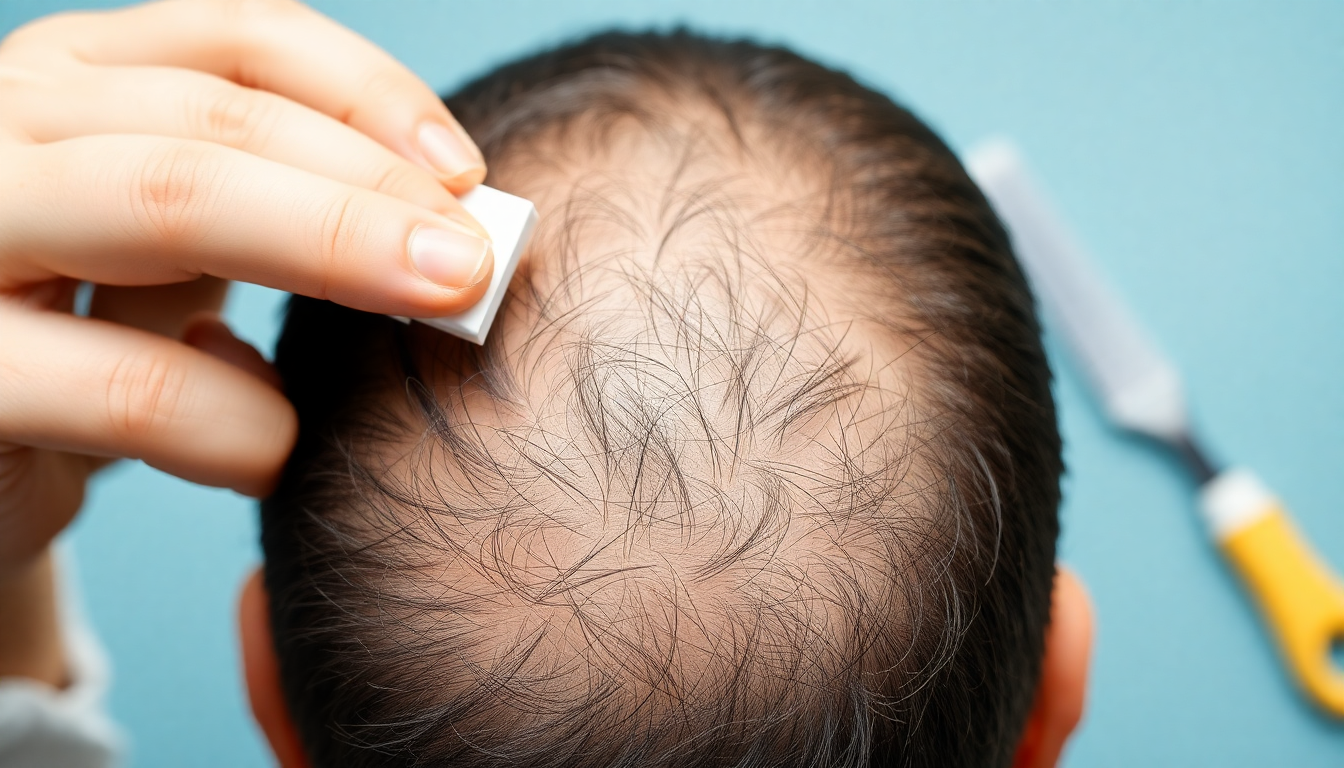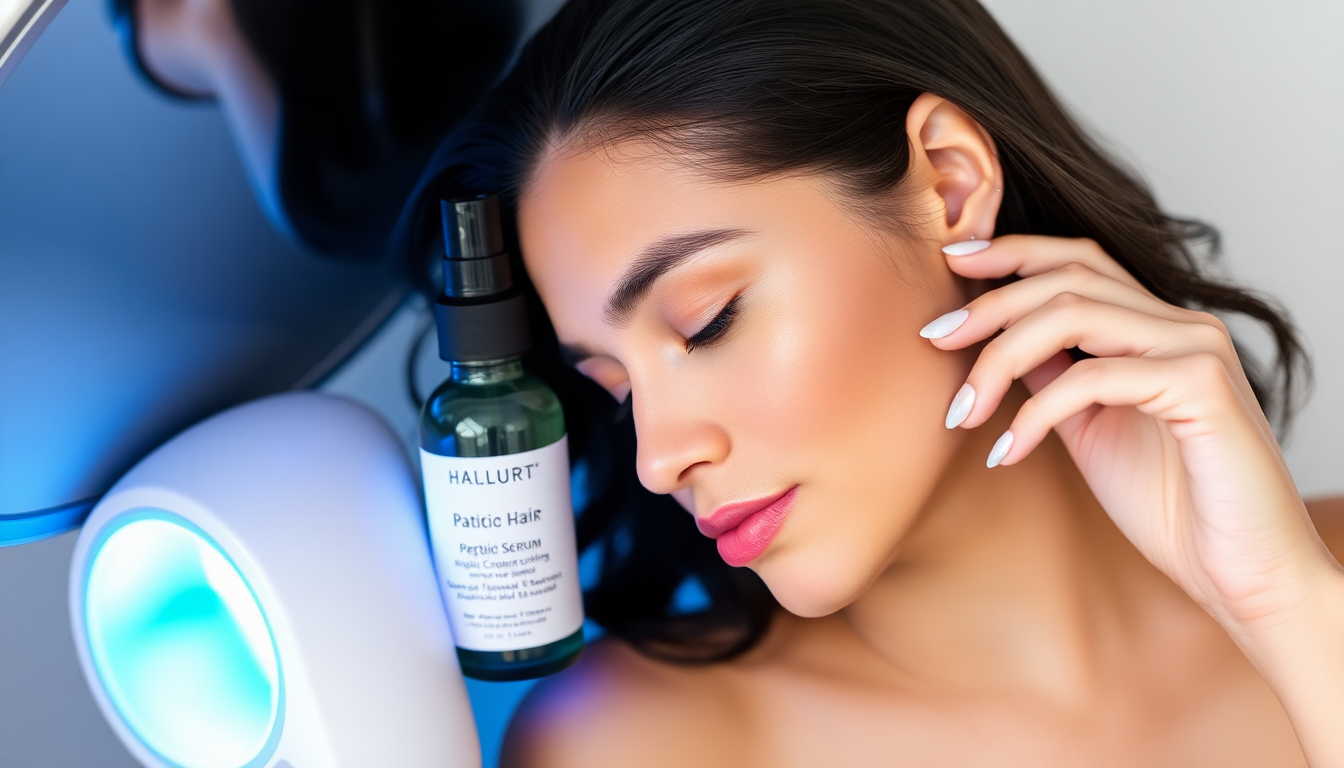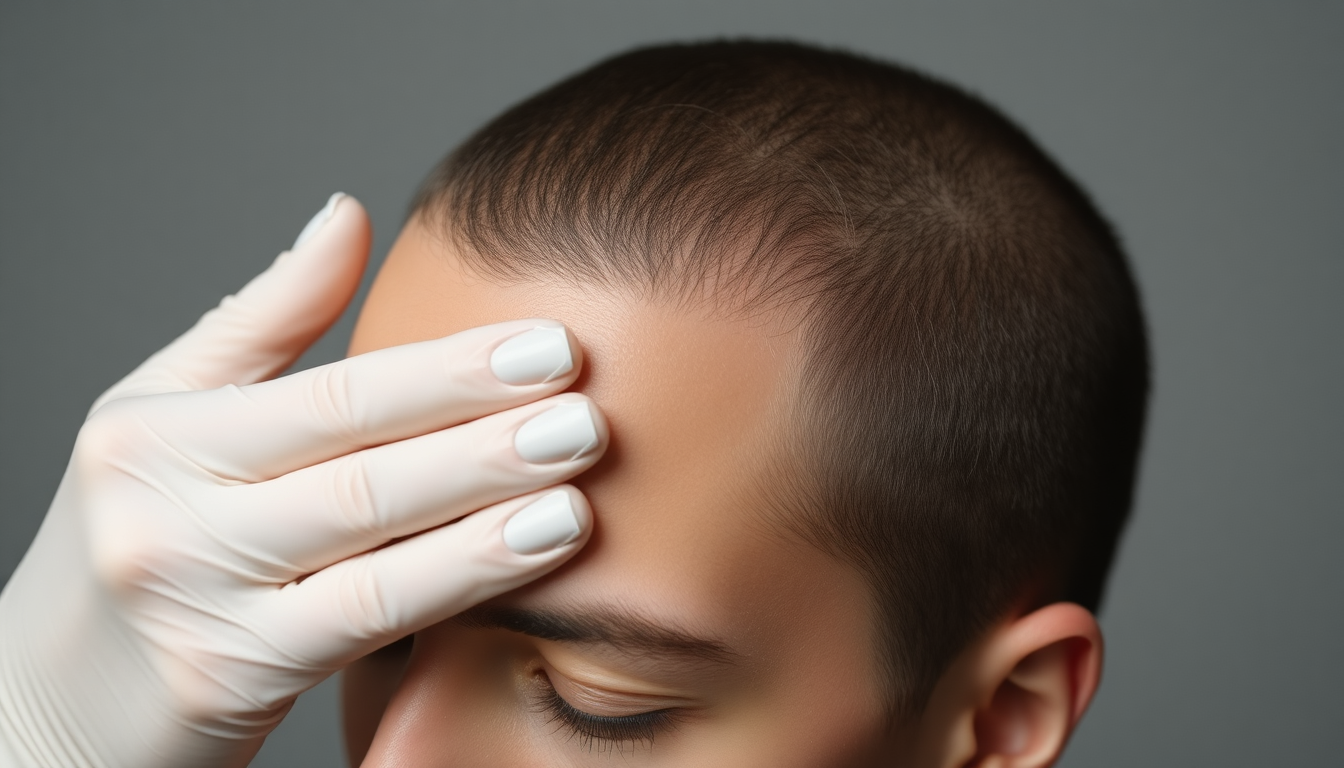Introduction
Combining peptide serums, prebiotic scalp therapies and at‑home devices (LLLT, microneedling tools, scalp massagers) can accelerate improvements in hair density when done thoughtfully. This expanded guide walks you through the science, practical pairings, step‑by‑step routines for different scalp types, troubleshooting, monitoring plans and product selection criteria so you get measurable results with minimal irritation.

Why compatibility matters: biology, barrier and balance
Hair density outcomes depend not only on a single product but on how treatments interact with scalp biology and each other. Key mechanisms to consider:
- Barrier integrity: The scalp’s stratum corneum controls absorption and inflammation. Procedures that open microchannels (microneedling) or highly permeable formulations change what and how much gets in.
- Microbial balance: A balanced microbiome reduces chronic inflammation that can impair follicle health. Prebiotic therapies aim to support beneficial microbes and reduce dysbiosis.
- Cellular signaling: Peptides and LLLT modulate cellular signaling pathways involved in hair cycle regulation and follicle strength.
Deep dive: what peptide serums do and how they work
Peptides are short amino‑acid chains that can signal cells to perform certain functions. In scalp care, peptides target follicle resilience, inflammation and extracellular matrix repair.
- Common peptides: GHK‑Cu (copper peptides) — promotes repair and may support follicle environment; palmitoyl tetrapeptide — often used for structural support; other proprietary peptide blends target growth factor pathways.
- Benefits: Strengthening hair shafts, reducing breakage, supporting follicular extracellular matrix and calming low‑grade inflammation.
- Formulation notes: Peptides perform best in stable, pH‑appropriate serums. Avoid highly acidic vehicles that may denature sensitive peptides.

Prebiotic scalp therapies: science and practical role
Prebiotics are substrates that feed beneficial microbes and support a healthy microbiome. On the scalp they can lower inflammation and strengthen barrier recovery after device use.
- Ingredients often used: Inulin, fructooligosaccharides (FOS), fermented extracts, postbiotic peptides and polyhydroxy alcohols that support hydration without stripping sebum.
- Why they matter: A healthier microbiome correlates with reduced flaking, less irritation and an environment more favorable to follicle recovery.
- Formulation tips: Choose leave‑on prebiotics in non‑occlusive bases when pairing with peptides and devices to avoid trapping bacteria when microchannels exist.
How common at‑home devices work
Understanding device mechanisms helps you choose safe timing and product pairings.
- Low‑level laser therapy (LLLT): Uses red/near‑infrared light to stimulate cellular metabolism, mitochondrial activity and local circulation. Compatible with most topicals. Often used 3–5× per week depending on the device.
- Microneedling / derma‑rollers: Create microchannels and mechanical signaling that promote growth factor release. Typical at‑home needle lengths range from 0.25–0.5 mm; clinical treatments use longer needles and are performed by professionals. Microneedling increases topical absorption but also transiently raises infection risk.
- Scalp massagers / mechanical stimulation: Manual or electric devices increase blood flow and assist product distribution; low risk and high compatibility with most treatments.

Compatibility matrix (expanded guidance)
Use the following as practical rules rather than rigid laws. If you have active scalp disease, consult a dermatologist.
- Peptide serum + Prebiotic leave‑on: Very compatible. Apply prebiotic first if it’s watery/tonic, let absorb 1–2 minutes, then apply peptide serum. Example: Eelhoe prebiotic scalp tonic followed by Eelhoe peptide serum.
- Peptide serum + LLLT: Highly compatible. LLLT can be used before or after topical routines; many users prefer LLLT then topical at night for uninterrupted absorption.
- Prebiotic + LLLT: Complementary. Prebiotics support the scalp environment that LLLT stimulates.
- Microneedling + Peptide serum: Powerful synergy but proceed cautiously. Typical safe approach: microneedle session → wait 24 hours for barrier recovery → start gentle peptide application. If a clinician supervises, they may recommend immediate application of sterile, clinician‑grade peptides or growth factor serums in controlled settings.
- Microneedling + Prebiotic: Use prebiotics 24–48 hours post‑needling to support microbiome while avoiding application of complex, non‑sterile formulations into open channels immediately after treatment.
- Device stacking: Avoid doing microneedling and LLLT on the same day at full intensity; spread stimulation across your schedule to allow recovery.
- Ingredients to avoid around invasive devices: High‑strength acids (glycolic, salicylic >10%), retinoids/retinol, essential oils and strong preservatives — these can sting and cause inflammation when absorbed excessively after microneedling.
Practical step‑by‑step routines by goal and scalp profile
Routine A — Sensitive scalp, early thinning
- AM: Gentle sulfate‑free cleanser → light prebiotic scalp tonic (leave‑on) → peptide serum with calming actives (niacinamide, panthenol) → gentle scalp massage for 2–3 minutes.
- PM: Scalp massage + peptide serum. Use LLLT 2–3× weekly on alternate days to avoid over‑stimulation.
- Introduce microneedling only under clinician guidance (if at home, start with 0.25 mm, once every 2 weeks at most).
Routine B — Oily scalp with shedding
- AM: Clarifying shampoo 2–3× weekly (avoid daily stripping) → prebiotic foaming tonic to support microbiome → lightweight peptide serum.
- PM: Lighter peptide at night; avoid heavy oils that can trap sebum.
- Microneedling: delay until oil/flare controlled; when used, ensure scalp is clean and tools sterilized.
Routine C — Accelerated density program (experienced users)
- Week cycle example: Microneedling every 7–10 days (0.5 mm at home or clinical protocol as advised) → post‑needling: 24–48 hour wait then resume gentle peptide + prebiotic balm to soothe. Use LLLT on non‑microneedling days.
- Daily: Prebiotic tonic AM, peptide serum PM, nightly scalp massage.
- Track: Take photos every 4 weeks; expect visible changes around 12–24 weeks.
12‑week sample plan with milestones
This sample timeline balances safety with accelerated outcomes. Adjust for tolerance and clinician recommendations.
- Weeks 0–2: Baseline photos, patch tests. Start daily prebiotic tonic AM and peptide serum PM. LLLT 3× week.
- Weeks 3–6: Continue routine. If well tolerated, start once‑every‑10‑day microneedling session (0.25–0.5 mm) or a clinician session. Maintain prebiotic after 24 hrs and nightly peptide serum.
- Weeks 7–10: Increase LLLT to 4× week if tolerated. Continue microneedling at planned interval. Document any irritation and adjust frequency down if needed.
- Weeks 11–12: Evaluate progress via photos and density tracking. Consider clinician consult for advanced interventions if progress is limited.
Safety, sterilization and device hygiene
- Wash all hands and clean the scalp thoroughly before any device use.
- Sterilize rollers/needles per manufacturer instructions (e.g., isopropyl alcohol wipe, replace disposable heads regularly).
- Do not share devices. Store in a clean, dry case.
- Stop active treatment if pustules, widespread redness, bleeding that doesn’t stop, or signs of infection occur; seek medical care.
Ingredient interactions and what to avoid
Layering the wrong combination can cause sensitivity or reduce efficacy. Watch for these interactions:
- Strong exfoliants + microneedling: Risk of chemical burns and prolonged inflammation.
- High alcohol tonics + peptides: Can dry and denature peptides; prefer gentle, hydroxy‑free vehicles if using peptides frequently.
- Bleach or chemical treatments: Space chemical color/treatment services around microneedling and avoid heavy chemical processing during an aggressive scalp protocol.
- Essential oils: Can be irritating when absorbed in greater amounts post‑microneedling; avoid immediate post‑device application.
How to choose formulations for compatibility
Shopping guidance to maximize compatibility and minimize surprises:
- Prefer products with clear ingredient lists and minimal filler fragrance.
- Choose peptide serums in stable, buffered bases with antioxidant support (vitamin E, niacinamide) for tolerance.
- Select prebiotic tonics labeled for leave‑on use and microbiome support; these pair well with peptides and devices.
- When in doubt, choose a single brand line whose products are formulated to work together — it reduces risk of unexpected interactions. For example, the Eelhoe collection is formulated with compatibility in mind; explore their peptide scalp serum and prebiotic scalp tonic that are intended to be used together.
Troubleshooting — common issues and fixes
- Persistent redness after product application: Stop all actives, use soothing prebiotic balm, resume one product at a time after improvement.
- Increased shedding early in a program: This can happen as hair cycles shift; monitor for 8–12 weeks. If shedding is severe or prolonged, consult a clinician.
- Itching or flaking: Could be a reaction to a carrier or fragrance. Switch to fragrance‑free formulations and add a gentle prebiotic tonic to rebalance the scalp.
Clinical evidence and realistic expectations
Evidence supports that multimodal approaches (topicals + devices) can produce additive benefits for hair density compared with monotherapy in many users. Expect gradual improvements:
- Early changes in texture and reduced breakage often occur within 6–12 weeks.
- Meaningful increases in density typically require 12–24 weeks of consistent use and device sessions.
- Individual responses vary widely by genetics, hormonal status and baseline scalp condition.
Tracking progress and objective measurement
Objective tracking improves decision‑making:
- Take standardized photos every 4 weeks (same lighting, camera, positions).
- Use simple density measurements, like visible scalp area scoring or count of hairs in a small 1 cm2 zone if you want precision.
- Keep a treatment log: product used, device sessions, date, and any side effects.
Case studies (illustrative, anonymized)
- Case A: 38‑year‑old with early female thinning switched to a peptide + prebiotic regimen with LLLT. After 16 weeks showed decreased miniaturization and fuller mid‑shaft volume. Intervention: daily peptide at night, prebiotic AM, LLLT 4×/wk.
- Case B: 45‑year‑old male with androgenetic thinning who added controlled microneedling (clinician) and a peptide maintenance serum. At 6 months, improved hair count in sampled areas and subjective fullness.
Product selection checklist (quick reference)
- Clear ingredient transparency and pH information where possible.
- Gentle vehicle for peptides (low alcohol, non‑stripping surfactants).
- Prebiotics designed for leave‑on scalp application.
- Devices with published safety data and clear usage instructions; consult a clinician for microneedling needle lengths above 0.5 mm.

Expanded FAQ
- Q: Can I use multiple peptide serums together? A: Avoid stacking several proprietary peptide blends simultaneously. Choose one targeted peptide serum and support it with antioxidants and prebiotics.
- Q: How soon after LLLT can I apply a topical? A: You can usually apply topicals before or after LLLT. If your device manufacturer gives specific guidance, follow it. Many users apply peptides at night after evening LLLT.
- Q: Are daily microneedling sessions safe? A: No. At‑home microneedling should be infrequent (e.g., once per 7–14 days for 0.25–0.5 mm) to allow recovery. Clinical treatments have different spacing under professional supervision.
- Q: Will prebiotics interfere with medicated shampoos? A: They generally don’t, but avoid applying complex leave‑ons immediately after medicated shampoos that contain strong actives (e.g., ketoconazole) — wait until the scalp has rinsed and dried and monitor for irritation.
Visuals and SEO‑friendly image alt tags
Use descriptive alt tags that include keywords for both accessibility and SEO. Examples used in this article include:
- alt="scalp treatment compatibility guide peptide serums prebiotic therapy hair density"
- alt="peptide serum for hair density application GHK-Cu"
- alt="LLLT helmet therapy for hair density red light"
- alt="prebiotic scalp tonic for microbiome balance"
Where to begin — curated product pathway
If you’re building a starter kit that’s formulated to be compatible, look for:
- A gentle prebiotic scalp tonic for daily use (apply AM).
- A peptide scalp serum with antioxidant support for nightly application.
- An LLLT device for regular non‑invasive stimulation on alternate days.
- One low‑risk scalp massager to boost circulation and product distribution.
For readers who want clinician‑informed formulations designed to work together, check the Eelhoe lineup — their products are positioned for compatibility with peptides, prebiotic tonics and device use. Discover the Eelhoe peptide scalp serum, the Eelhoe prebiotic scalp tonic and complete Eelhoe scalp care essentials to build a safe, effective routine.
Final checklist before you start
- Baseline photos and notes on hair concerns.
- Patch test every new product for 48 hours behind the ear.
- Plan device schedule to avoid stacking invasive and stimulatory treatments on the same day.
- Identify a single peptide serum and a single prebiotic product to start; add other elements only after 4–6 weeks of tolerance.
Conclusion — a strategic path to safer, faster density gains
Pairing peptide serums, prebiotic therapies and at‑home devices can accelerate hair density improvements when you respect timing, product formulation and scalp biology. Start conservatively, track objectively, and escalate only as tolerance and results permit.
If you’d like a ready‑to‑use, compatibility‑focused collection, explore the Eelhoe range. Their prebiotic tonic and peptide serum are formulated to work together and with at‑home devices — visit Eelhoe Cosmetics to view the scalp care line and shop recommended products for a safer, faster path to fuller hair.
Disclaimer: This article is informational and not a substitute for professional medical advice. Consult a dermatologist or licensed clinician for tailored recommendations, especially if you have scalp disease or are on prescription therapies.




Laat een reactie achter
Alle reacties worden gemodereerd voordat ze worden gepubliceerd.
Deze site wordt beschermd door hCaptcha en het privacybeleid en de servicevoorwaarden van hCaptcha zijn van toepassing.